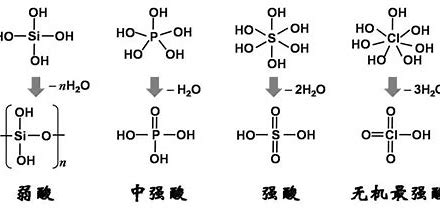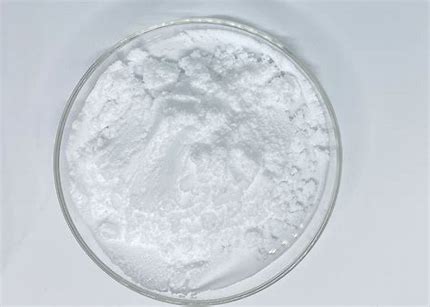How to Balance the Ionic Formula of Lithium Sulfide
Understanding how to write and balance the ionic formula for compounds like Lithium Sulfide (Li2S) is a fundamental skill in chemistry. It’s not just about memorizing names; it’s about understanding how atoms achieve stability by gaining or losing electrons, forming ions, and then combining in precise ratios to form neutral ionic compounds.
1. What is an Ionic Formula? The Basics of Ionic Compounds
Before we tackle Lithium Sulfide, let’s establish what an ionic formula represents.
- Definition of Ionic Compounds: Compounds formed between a metal and a non-metal, involving the complete transfer of electrons from the metal atom(s) to the non-metal atom(s).
- Formation of Ions:
- Cations: Positively charged ions, typically formed when metal atoms lose valence electrons.
- Anions: Negatively charged ions, typically formed when non-metal atoms gain valence electrons.
- The Goal of Ionic Bonding: Atoms bond to achieve a stable electron configuration, usually resembling that of a noble gas (octet rule for most main group elements).
- Electroneutrality: A key principle: the overall charge of an ionic compound must always be neutral (zero). The positive charges from cations must exactly balance the negative charges from anions.
2. Identifying the Elements and Their Ions in Lithium Sulfide
To write the ionic formula for Lithium Sulfide, we first need to identify the elements involved and their typical ionic charges.
- Lithium (Li):
- Location on the Periodic Table: Group 1 (Alkali Metals).
- Number of Valence Electrons: 1.
- How it forms an ion: Loses its 1 valence electron to achieve a stable electron configuration.
- Lithium Ion (Li+): Forms a +1 charge (Oxidation State of +1).
- Sulfur (S):
- Location on the Periodic Table: Group 16 (Chalcogens).
- Number of Valence Electrons: 6.
- How it forms an ion: Gains 2 valence electrons to achieve a stable electron configuration (octet).
- Sulfide Ion (S2−): Forms a -2 charge (Oxidation State of -2).
3. Balancing the Charges: Step-by-Step for Lithium Sulfide
Now that we know the individual charges of the Lithium Ion and the Sulfide Ion, we can balance them to achieve electroneutrality.
- Step 1: Write down the ions with their charges.
- Li+
- S2−
- Step 2: Find the Least Common Multiple (LCM) of the absolute values of the charges.
- Absolute value of Li charge: 1
- Absolute value of S charge: 2
- LCM of 1 and 2 is 2.
- Step 3: Determine how many of each ion are needed to reach the LCM.
- For Li+: To get a total positive charge of +2 (the LCM), you need two Li+ ions (2 x +1 = +2).
- For S2−: To get a total negative charge of -2 (the LCM), you need one S2− ion (1 x -2 = -2).
- Step 4: Write the chemical formula using subscripts to indicate the number of each ion.
- Since we need two Lithium ions, the subscript for Li is 2.
- Since we need one Sulfide ion, the subscript for S is 1 (which is usually omitted).
- Resulting Ionic Formula: Li₂S
4. Verifying the Balanced Formula for Lithium Sulfide
Let’s double-check our work to ensure the formula is indeed balanced and represents a neutral compound.
- Number of Li+ ions = 2
- Charge per Li+ ion = +1
- Total positive charge = 2 * (+1) = +2
- Number of S2− ions = 1
- Charge per S2− ion = -2
- Total negative charge = 1 * (-2) = -2
- Overall Net Charge = Total positive charge + Total negative charge = (+2) + (-2) = 0.
Since the net charge is zero, the ionic formula Li₂S is correctly balanced.
5. Why is this Important? Applications of Ionic Formulas
Understanding how to balance ionic formulas extends far beyond just Lithium Sulfide.
- Predicting Chemical Reactions: Knowing the charges helps predict how ions will combine and what products will form in reactions.
- Stoichiometry and Calculations: Correct formulas are essential for accurate stoichiometry calculations (e.g., determining mass ratios, moles, and limiting reactants).
- Chemical Nomenclature: The balanced formula directly informs the correct naming of ionic compounds.
- Understanding Material Properties: The arrangement of ions in a crystal lattice (derived from the formula) influences the physical and chemical properties of the ionic compound (e.g., melting point, conductivity).
- Lewis Dot Structures (Brief Mention): While not strictly required for formula balancing, understanding Lewis Dot Structures can visually represent the electron transfer process leading to ion formation.

Conclusion: Mastering Ionic Formulas with Lithium Sulfide
Balancing the ionic formula of Lithium Sulfide to get Li₂S is a perfect example of applying fundamental chemical bonding principles. By systematically identifying the ions formed by Lithium and Sulfur based on their valence electrons and achieving electroneutrality, you can confidently write the correct chemical formula for this and countless other ionic compounds. This skill is a cornerstone of inorganic chemistry and essential for anyone looking to truly understand the building blocks of matter.
Frequently Asked Questions (FAQ)
- What is the charge of a Lithium Ion? A Lithium Ion has a charge of +1 (Li+).
- What is the charge of a Sulfide Ion? A Sulfide Ion has a charge of -2 (S2−).
- Why is the formula for Lithium Sulfide Li₂S, not LiS₂? The formula is Li₂S because Lithium forms a +1 ion (Li+) and Sulfur forms a -2 ion (S2−). To balance the charges and achieve an overall neutral compound, you need two Li+ ions to balance one S2− ion (2 * +1 + 1 * -2 = 0).
- What are ionic compounds? Ionic compounds are chemical compounds formed by the electrostatic attraction between oppositely charged ions, which result from the complete transfer of electrons from a metal atom to a non-metal atom.
- How does electron transfer relate to forming the ionic formula? Electron transfer is the initial step: metal atoms lose valence electrons to become positive cations, and non-metal atoms gain those electrons to become negative anions. The ionic formula then represents the simplest whole-number ratio of these cations and anions needed to achieve overall charge neutrality.







